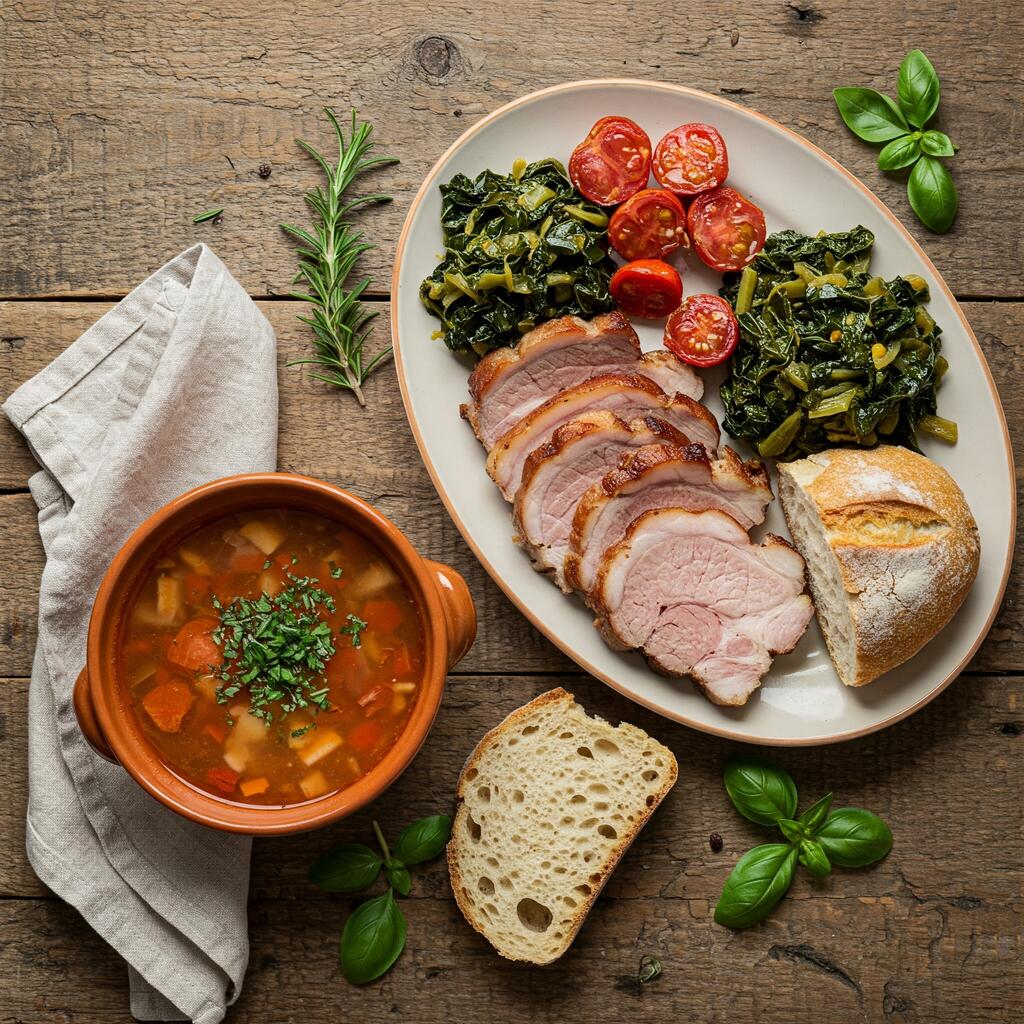
Authentic Recipes of Traditional Pistoiese Cuisine
Today I want to tell you about some typical recipes from the city of Pistoia. Unfortunately in Tuscany, where this town is located, it is one of the least known of the provinces, even though its history is very old and art can be found everywhere in its small historic centre, as in the other towns of its province.
In addition, in the province of Pistoia one can find environments that are still intact and rich in flora and fauna. So the flavours of this small land can be savoured both in the city and in the small towns that offer many typical local products.
Let us begin our all-Pistoia menu with appetisers.
The bruschetta
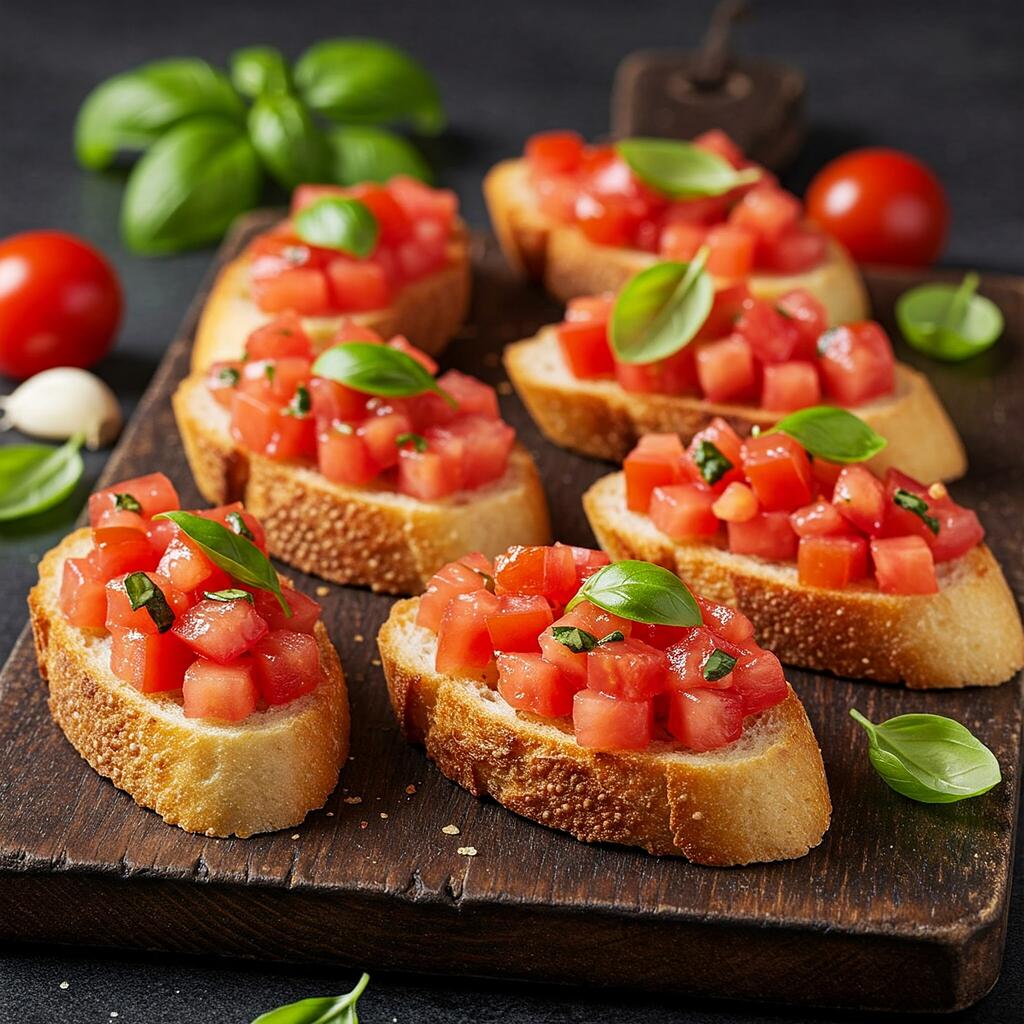
Ingredients:
- some slices of bread (strictly Tuscan, therefore without salt)
- a clove of garlic
- olive oil
- salt to taste.
Preparation:
Some slices of homemade bread are toasted in the oven, and as soon as they are taken out of the oven, they are rubbed with the clove of garlic that you have peeled. The bread is then seasoned with olive oil and a pinch of salt. It is recommended to eat it as soon as it is done while still warm.
The black crostini
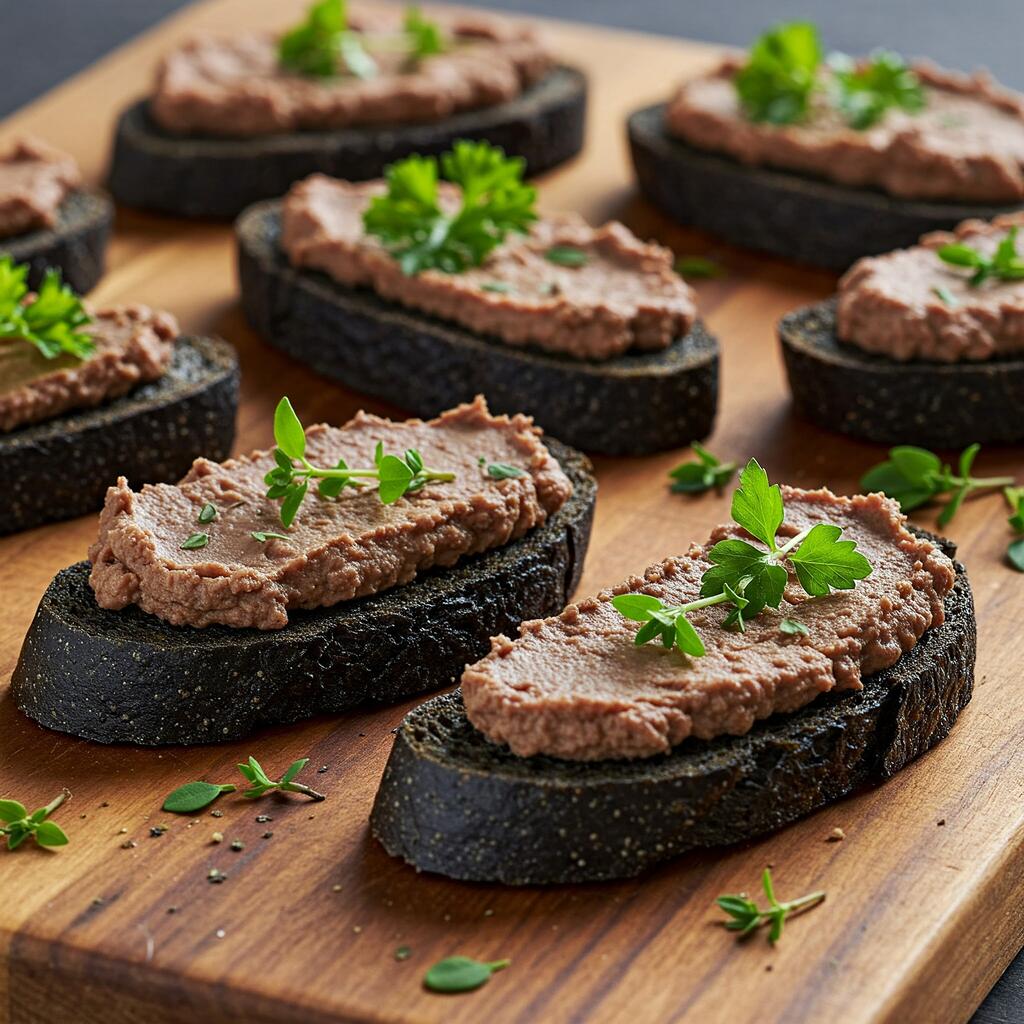
Ingredients:
- grams 300 of chicken livers
- grams 150 of spleen
- one celery rib, one small onion and one carrot chopped to make the base of the sauce
- a few salted capers
- half a glass of red wine
- a glass of meat stock or stock cube
- a clove of garlic
- a bay leaf
- a few parsley leaves
- salt and pepper
- enough butter and oil
- 2 or 3 anchovy fillets
Preparation:
Clean and wash the chicken livers and spleen, puree everything in a food processor to chop as finely as possible.
Chop the carrot, celery and onion as finely as possible. Meanwhile, sauté the chopped vegetables you have already prepared in a pan with a little butter and oil in equal amounts. Add the crushed garlic clove, parsley and bay leaf, which must be removed as soon as they are golden.
Now add the liver and spleen mixture to the sauce and simmer for about half an hour, adding stock if the mixture tends to dry out too much. After this time add the wine and let it evaporate. Add the capers which you have chopped very finely, season with salt and pepper and continue adding stock and cook for another twenty minutes or so until the mixture is soft and creamy.
Meanwhile, prepare the bread by toasting small slices of Tuscan bread (i.e. without salt). Just soak some of the bread in the broth and place a portion of the sauce on top. Our black crostini are ready.
Another way to bring crostini to the table, which in my opinion is better because it allows you to eat them always hot, is to have the guests prepare the crostini directly on the table, bringing a ceramic bowl containing the sauce with a small cooker underneath to keep it always hot and the crostini just taken out of the oven. It is then up to the guests to choose how many croutons to eat.
Let us now move on to the first courses. I propose two, the first is the typical dish prepared on 25 July, the feast day of Pistoia's patron saint, San Jacopo, and it is maccheroni with duck. A rich and substantial dish. The other instead is a truly poor first course. Its name is carcerato and legend has it that it was prepared by the inmates of the Pistoia prisons, located next to the public slaughterhouses. For this very simple dish, slaughterhouse waste and the less valuable parts of veal or beef were therefore used.
Maccheroni all'anatra or di San Jacopo
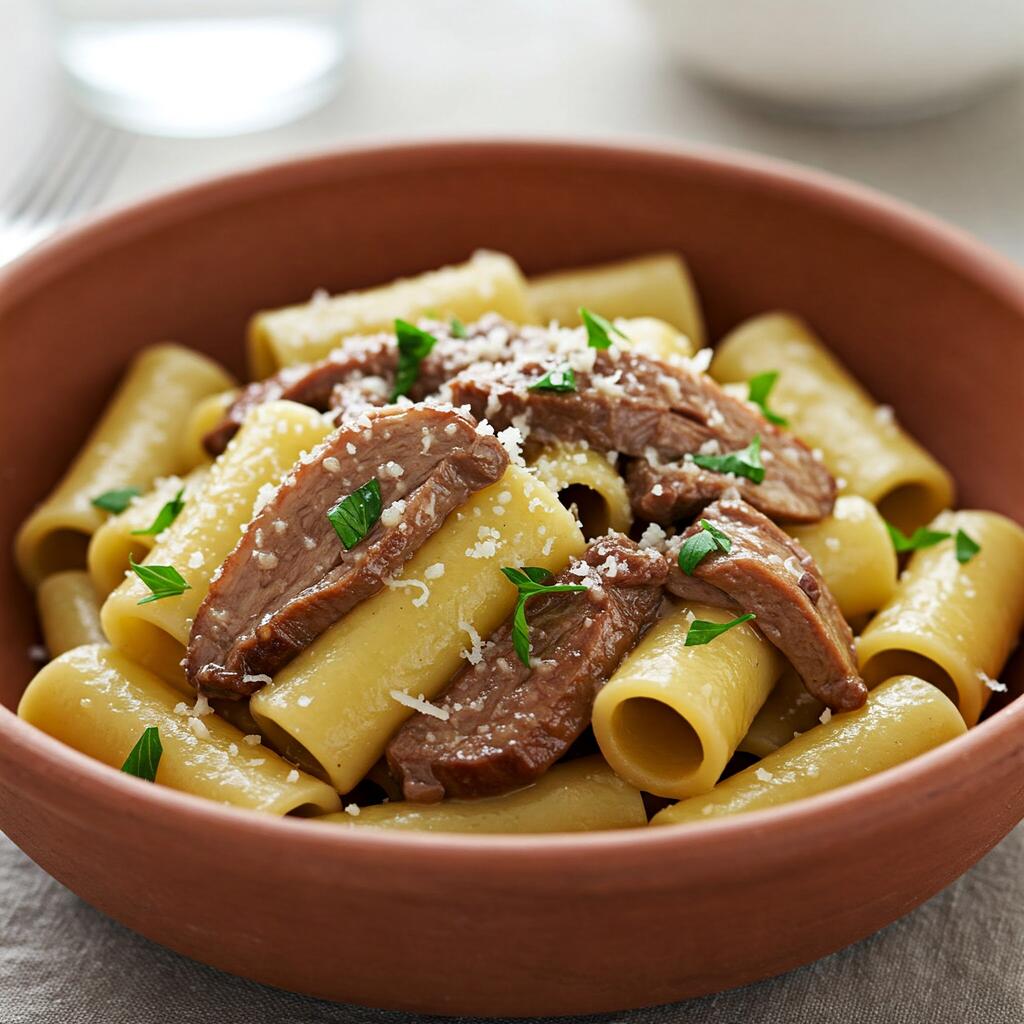
Ingredients for 4 people
- about 400 grams of 00-type flour
- 4 eggs
- a pinch of salt
- a drop of olive oil.
Knead the flour with the eggs, slowly adding a pinch of salt and a drop of olive oil, until the dough is smooth and homogeneous. At this point, either roll out the dough with a rolling pin until a very fine sheet is obtained which will then be cut into squares, or use a pasta machine which allows you to roll out strips of dough which will then be cut as before. Our macaroni is ready, now let's move on to the duck.
For this preparation, the mute duck is used (so called because it squawks much less than the other species even though it is not really mute). The strange thing is that this type of duck is not from our area but the farms are in the Po valley. But it is not a very old dish considering that this variety of duck was imported from South America.
Ingredients for preparing the duck
- A whole duck
- One celery rib
- 2 onions
- 2 carrots
- a sprig of rosemary
- 2 cloves of garlic
- 500 grams of peeled chopped tomatoes
- a glass of dry white wine
- oil, salt, pepper and grated cheese to taste.
Prepare the duck ragout and the duck in pieces that will serve as a main course.
Clean the duck well, removing all the innards, which we will leave aside because they will be used in our ragout. Cut the duck into pieces, taking care to remove a small amount of meat from some of the larger pieces, which will be finely minced.
In a pan put the olive oil and sauté the vegetables (onions, celery and carrots, thinly sliced but not chopped), the crushed garlic should be removed as soon as it is golden. When the vegetables are golden brown, add the chopped duck and the smaller pieces we had chopped earlier.
Let the meat cook for a few minutes and in the meantime clean and wash under running water the duck's insides that you had removed earlier. Chop them finely and add them to the sauté and to the meat, they will give body to the sauce that will season our macaroni.
Then add the white wine and let it evaporate, season with salt and pepper and add the peeled tomatoes cut into small pieces and the rosemary sprig, which should be removed when cooked. Cook for about an hour and a half, adding hot water if the mixture tends to dry out too much.
When it is cooked, remove the larger pieces and put them aside to be eaten as a second course, while the remaining sauce will be used to season the macaroni, which you have meanwhile cooked in plenty of hot salted water.
Bring the already grated cheese to the table, which everyone will put as they wish. The original recipe calls for a typical cheese from the Pistoia mountains, raw-milk pecorino, as a dressing for this dish, and it is excellent because it is not very salty, but it is not very easy to find, so seasoned and grated parmesan or grana will also do.
In general, to accompany the pieces of duck that will serve as a main course, the ideal accompaniment are green snake beans, a type of very long green bean (hence the word snake) that can only be found in high summer and are stewed with a sauté of carrot, celery and onion in olive oil and chopped peeled tomatoes. They are a really good side dish for other preparations as well.
The prisoner
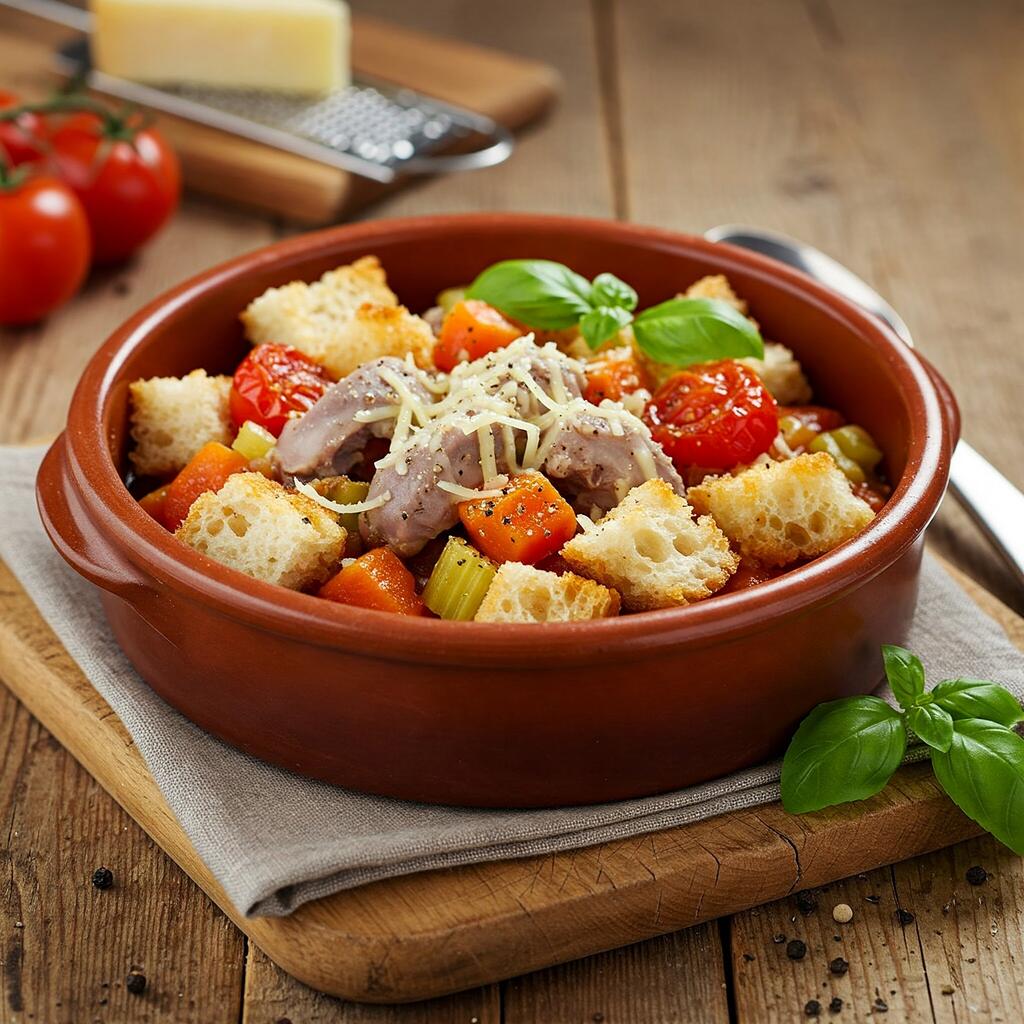
Ingredients for 4 people
- grams 350/400 of Tuscan bread (without salt) possibly baked in a wood-fired oven and at least a couple of days old
- grams 300/400 of mixed veal giblets (you can ask your trusted butcher)
- one carrot
- one celery rib
- one onion
- 3 ripe tomatoes
- a few basil leaves
- salt, black pepper and grated pecorino cheese.
Preparation:
The day before preparation wash the giblets very thoroughly in running water. Cook them in boiling water for a few minutes, then throw away the cooking water and place the giblets in cold water to keep until the next day.
The next day cook the giblets in boiling salted water together with the carrot, celery, onion, tomatoes and basil for about 3 hours. Remove from the heat, put the giblets and vegetables to one side and in the cooking water put the bread crumbled as much as possible, working it occasionally with a whisk or wooden spoon to turn it into a soft, creamy gruel.
Add the giblets and vegetables you have set aside, add a little butter, sprinkle with black pepper and grated cheese and serve very hot.
Now let's move on to the main courses.
Wild boar stew
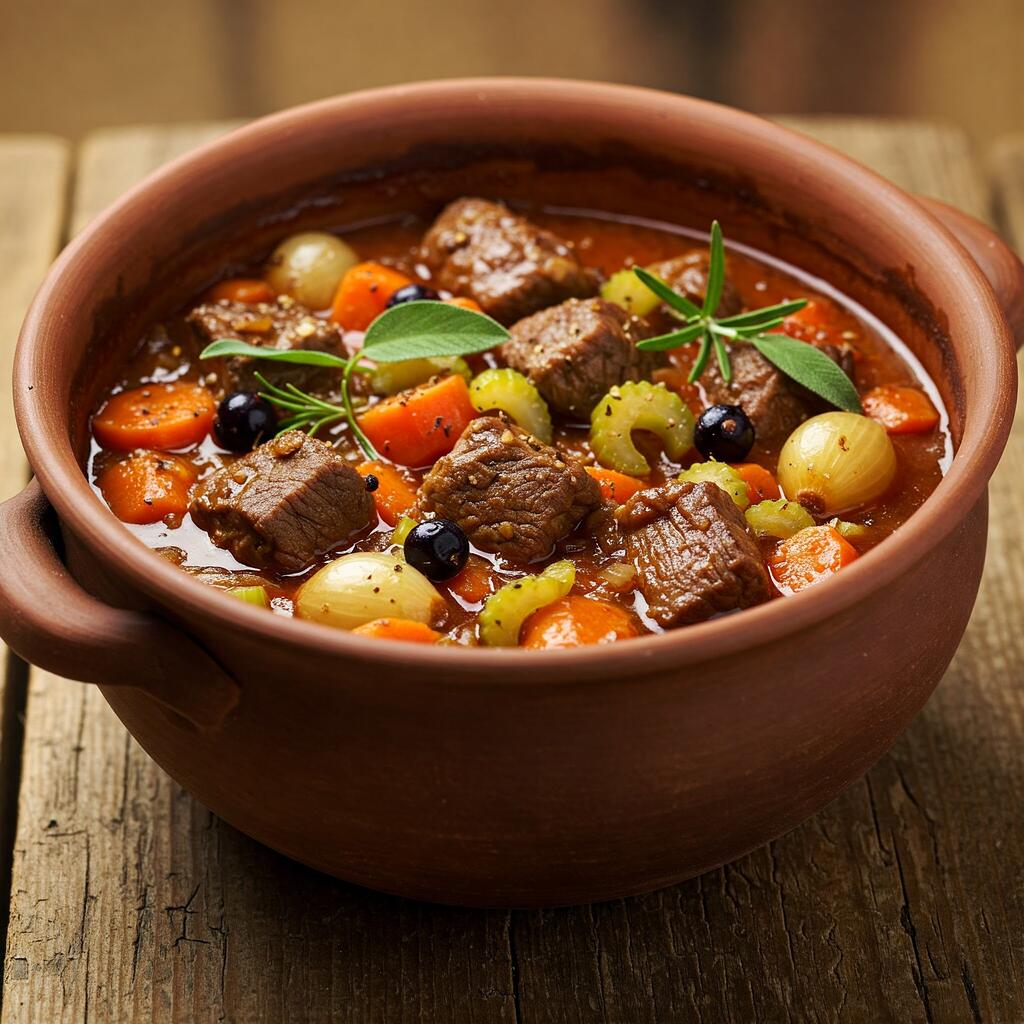
- 1 kg wild boar meat
- 2 carrots
- 2 celery stalks
- 2 medium onions
- 1 clove of garlic
- a sprig of rosemary
- a few parsley leaves
- 2 sage leaves
- 2 cloves
- a few juniper berries
- 400 grams of tomato puree
- 2 glasses of red wine
- salt, pepper and olive oil to taste.
Preparation
the preparation is quite long, in fact it should be started the day before.
Put the boar to marinate in a large bowl together with 1 carrot, 1 celery and 1 onion finely chopped, garlic, spices and red wine. Let it rest overnight
The next day remove the meat from the marinade and throw away the rest.The boar meat should be cut into small pieces. In an earthenware pot sauté the other carrot, celery and onion, (do not use the ones from the marinade as they retain the smell of the boar and are not good) finely chopped.
When they are golden, add the boar cut into small pieces and let it cook until it has absorbed and evaporated all the wine left inside the meat from its marinade. Once the boar is browned, add the tomato puree, salt and pepper to taste and let the meat cook uncovered for about 3 hours, turning it from time to time and adding a little meat stock or stock cube if needed. After this cooking time, the boar is ready to be brought to the table and enjoyed.
Desserts
They deserve a whole chapter because in the Pistoiese tradition there are various desserts and sweet specialities.
In the meantime, how can we not mention the famous Pistoiese curly sugared almonds. A riccio has a rather hard outside that has a vague flavour of vanilla while inside there is a heart of aniseed or coriander seeds. This is an artisan production typical of Pistoia, in fact only here you will find this type of confetto.
We then move on to another typical sweet from a town in the province of Pistoia, the brigidino. It is a small fragrant orange-yellow wafer, often curled, that smells of aniseed.
Not to mention the sweets made with chestnut flour found in abundance in the woods near the city. Sweets like castagnaccio or Necci with ricotta cheese that deserve a chapter of their own. However, speaking of this city of mine and especially of the traditional dishes that are cooked here, I think that Pistoia deserves a more in-depth visit, to taste these and many other specialities that I have not mentioned here.






















